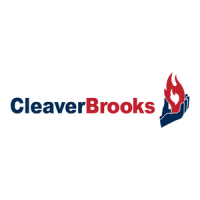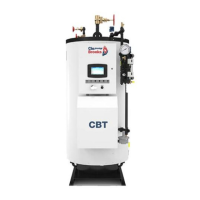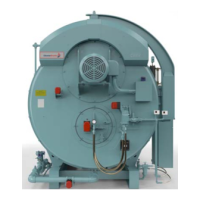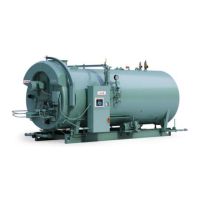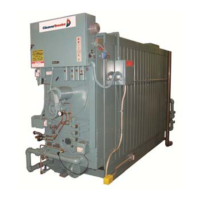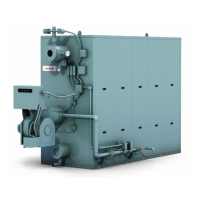53 750-265
5. After the ILK switch is closed and the purge rate proving
fan RPM is achieved (or High Fire Switch is closed) -
prepurge time is started.
6. When the purge time is complete, the purge fan RPM is
changed to the Lightoff Rate or if used, the damper
motor is driven to the Low Fire Position.
7. As soon as the fan-rpm is equal to the light-off rpm (+/-
200 rpm) (or the Low Fire Switch closes), the Trial for
Ignition or Pre-Ignition Time is started (depending on
hardware selection).
8. Pre-Ignition Time will energize the ignitor and check for
flame.
9. Trial for Ignition. Fig. 15–17 on page 38 are three igni-
tion options. Specifics for timings and device actions
were defined by the OEM.
10. The ignition and the gas valve are switched on.
11. The ignition is turned off at 0.3 seconds before the end
of the Trial for Ignition period, so the ignition-energy with
a combined electrode is released in time.
12. To check the flame signal (at the end of the safety time)
the fan is set to start-RPM during the stabilization time.
13. Before the release to modulation, the fan is switched to
minimum RPM for the CH Forced Rate and Slow Start
Enable, if the water is colder than the threshold.
14. The hysteresis off is increased with 50°F (10°C) during
60 seconds.
15. At the end of the CH-heat request the burner is
switched off and the fan stays on until post purge is
complete.
16. A new CH-request is blocked for the forced off time set
by the Anti Short Cycle (if enabled).
17. The pump stays on during the pump overrun time (if
enabled).
18. At the end of the pump overrun time the pump will be
switched off.
Domestic Hot Water
INITIATE
The Falcon enters the INITIATE sequence on Initial Power up
or:
• Voltage fluctuations vary +10%/-15%.
• Frequency fluctuations vary +/-10%.
• If Demand, LCI, or Stat interrupt (open) during the 16. At the end of the pump overrun time the pump will be
Prepurge Period. switched off.
The INITIATE sequence also delays the burner motor from
being energized and de-energized from an intermittent AC
line input or control input.
If an AC problem exists more than 240 seconds a lockout will
occur.
Start-up sequence DHW-request (system in standby):
1. Heat request detected (either DHW Sensor Only, DHW
Sensor and Remote Command or DHW Switch and
Inlet Sensor, whichever applies).
2. The pump is switched on (after the DHW Pump Start
Delay).
3. After a system Safe Start Check, the Blower (fan) is
switched on after a dynamic ILK switch test (if enabled)
has verified the ILK is open.
4. After the ILK switch closes and the purge rate proving
fan RPM is achieved (or High Fire Switch is closed) -
prepurge time is started.
5. When the prepurge time is complete, the purge fan
RPM is changed to the Lightoff Rate or if used, the
damper motor is driven to the Low Fire Position).
6. At the end of the Prepurge time, the fan-rpm set to the
start-rpm +/- 200 rpm or the Low Fire Switch input is
proven. Ignition Trials begin.
7. Trial for Ignition. Fig. 15–17 on page 38 are three igni-
tion options. Specifics for timings and device actions
were defined by the OEM.
8. The ignition and the gas-valve are switched on.
9. The ignition is turned off at 0.3 seconds before ending
the PFEP (MFEP), so the ignition-energy with a com-
bined electrode is released in time.
10. Verification of the flame will release R7910A to Run and
modulation.
11. A slow start can be present prior to Run, depending on
the setting for the DHW Slow Start Enable parameter.
12. The system is now in Run.
13. At the end of the DHW-heat request the burner is
switched off and the blower output stays on and the fan
is adjusted to postpurge rate to complete postpurge.
14. A new DHW-request is blocked for the time set by the
anti short cycle time.
15. The pump stays on during the pump overrun time.
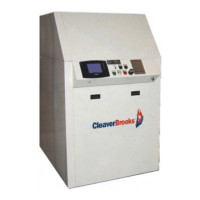
